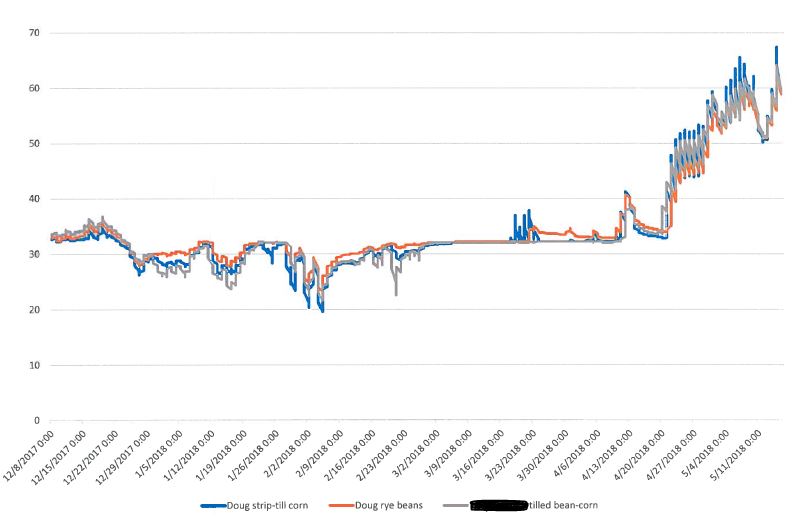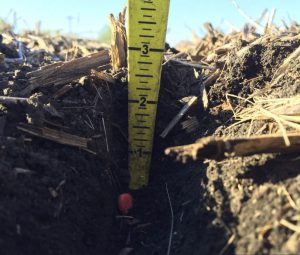A wet spring isn’t a new occurrence for Humboldt County farmer Doug Adams. But following a wet harvest adds to the concern of farmers in his area that didn’t get their fall tillage work complete.

Due to the soggy harvest season, Adams, a no- and strip-till farmer, wasn’t able to make his strips for the 2019 corn crop. If he can’t get the strips made this spring, he will resort to plan B. “If it stays wet and gets late in the planting season, I will go ahead and no-till the corn crop this spring,” he said. “The advantage of the strips for the corn is the warmer soil temperature in the seed zone. But if we’re delayed, soil temperature shouldn’t be a concern.”
Adams also uses the strips for fertilizer placement, but this will be broadcast if Mother Nature forces his hand. “My plan is to take a look at those fields by pulling some soil samples to see how broadcasting affected the fertility. I want to make sure I’m replacing what was removed in those fields.”
Adding acres to his farming operation presents new challenges, but reinforces his no- and strip-till system with cover crops is the right thing. When he adds conventionally tilled land that wasn’t tilled in the fall, it moves directly into his farming system. “In my experience, switching to no- and strip-till farming doesn’t result in a drop in yield and you see soil health and water quality benefits pretty quickly,” he said.

In 2019, Adams is adding another piece of land that is directly across the road from one of his farms. The previous farmer completed the fall tillage work so it will be planted to corn this spring. “When I walk into this field I pick up a lot of mud on my boots. But I don’t sink into the no-till soil that is across the road,” he said. “This reinforces to me that going no-till improves water infiltration. The deeper we can get that water to go into the soil profile the better off we are later in the season if it turns hot and dry. This helps stabilize my yields over the long haul.”
Adams wants to get as much growth as possible on his cover crops before planting his corn and soybeans. “But since my strips were not made for the corn crop I might be forced to terminate a little earlier because I don’t want the cover crop tying up the nitrogen,” he said. “Soybeans, on the other hand, don’t mind the competition with the rye, and the longer it grows the better the weed control I get throughout the season.”
Click here to ask Doug a question about his farming operation.
